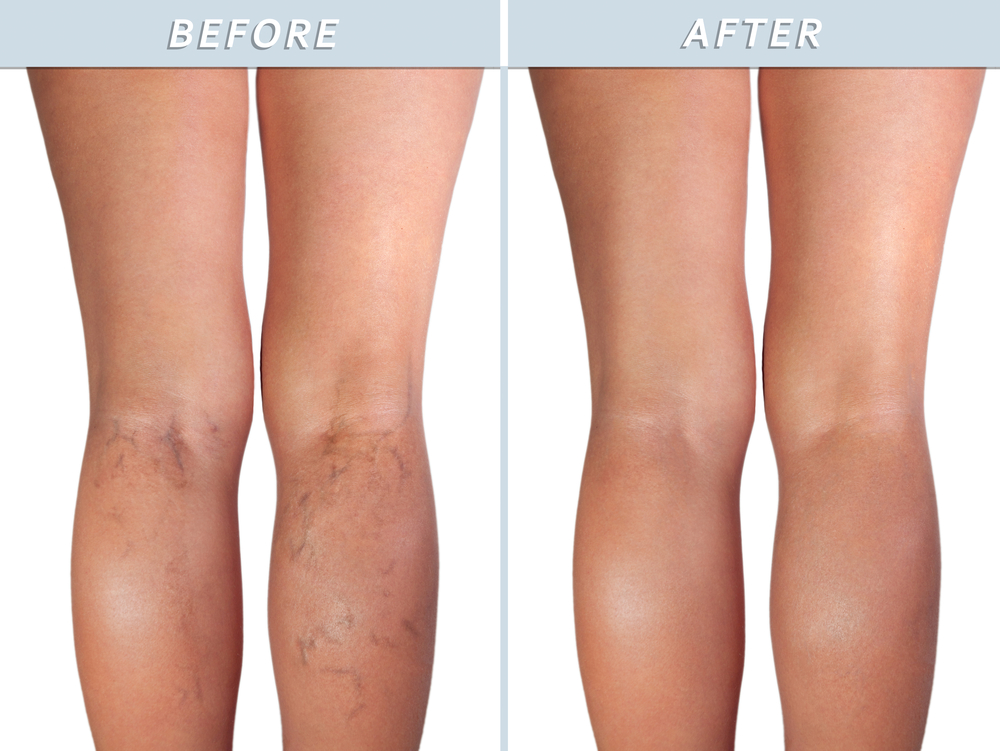
Varicose veins and spider veins are often dismissed as cosmetic issues. However, anyone suffering from the side effects and symptoms of painful veins can attest that varicose veins are a severe condition that can threaten your circulatory health.
Fortunately, most health insurance plans will cover treatments for the removal of varicose and spider veins as long as their removal can be deemed “medically necessary” rather than cosmetic. Here’s what your insurance company is looking for to categorize the removal of your veins as medically necessary.
When Vein Removal Is Medically Necessary
Swollen and painful veins are considered symptomatic of medically necessary treatment. While you can encourage blood flow around the affected area by wearing thigh-high compression stockings, varicose veins will remain until they are surgically removed or closed.
Most insurance companies will ask to review the results of a venous ultrasound before providing coverage for varicose vein treatments. Conducted in a vein specialist’s office, a short consultation appointment is covered under most insurance plans, and the provider will be able to present the quality of your veins. If the ultrasound produces findings that your varicose veins are causing swelling, ulcers, heaviness, or backward blood flow, your treatment will be labeled as medically necessary. This evidence will provide your insurer with what they need to cover the removal procedure.
If Your Veins Are Cosmetic Concerns
Cosmetic vein treatment can significantly improve the appearance of smaller vein disorders. Unlike varicose veins, cosmetic veins, such as spider veins, are considered nonsymptomatic of medically necessary treatment. As a result, this type of treatment is considered cosmetic and is not usually covered by insurance. As a result, patients will typically have to pay for cosmetic treatments out-of-pocket.
Vein Removal Treatment Options
Hinsdale Vein & Laser offers the following treatments for varicose veins:
Endovenous laser ablation
This treatment uses energy to cauterize (burn) and close varicose veins. This vein treatment successfully helps to ease vein-related symptoms, including pain, swelling, and irritation. Ablation is safe and less invasive than traditional vein removal surgery. Your doctor will use ultrasound to visualize the vein. A fiber or electrode is moved to the desired location within the vein through a small incision. Local anesthesia is injected into the tissues surrounding the vein to collapse the vein around the fiber or electrode. The energy heats the vessel and causes it to close, allowing the faulty vein to shrink down.
Chemical ablation using state of the art foam sclerotherapy (Varithena)
Varithena (polidocanol injectable foam) is used to treat varicose veins caused by problems with the great saphenous vein (GSV) and other related veins in the leg’s GSV system. Varithena improves symptoms related to or caused by varicose veins, and the appearance of varicose veins. A column of concentrated foam will destroy the lining of the vein wall within seconds and cause an inflammatory response that allows that vessel to close. Generally speaking, when you compare this to other types of sclerosis, it’s a far more safe and efficient tool to use at this time.
Medical adhesive that results in closure of the unwanted veins (Venaseal)
This procedure uses an adhesive to close the vein. During the procedure, a trained clinician fills a syringe with the medical adhesive, which is inserted into the VenaSeal closure system’s dispensing gun that is attached to a catheter. The catheter is advanced into the diseased vein under ultrasound guidance. The catheter is placed in specific areas along the diseased vein, and the clinician conducts a series of trigger pulls to deliver the medical adhesive.
Mechanochemical ablation of the vein (MOCA)
Mechanicochemical vein ablation is performed by sclerosant chemicals being delivered directly into the faulty saphenous vein trunk with a catheter that also physically spins and slightly damages the lining of the vein. This combination is designed to increase the success rate for obliterating the vein.
Ambulatory microphlebectomy
Ambulatory phlebectomy removes superficial veins through small, slit-like incisions in the skin. This treatment is a good option for treating both asymptomatic and symptomatic superficial veins from the skin. It is usually performed on larger veins that bulge above the surface of the skin and varicose veins. The veins are outlined, and bulging veins are surgically removed, segment by segment, through small incisions.
Finding The Best Treatment Option For You
It can be challenging to determine whether the discomfort in your legs is a common ache or pain resulting from a busy day, or whether it is symptomatic of a larger issue that requires medical care. To determine whether your insurance will cover the removal of your varicose veins, contact Hinsdale Vein & Laser today to schedule a consultation appointment.